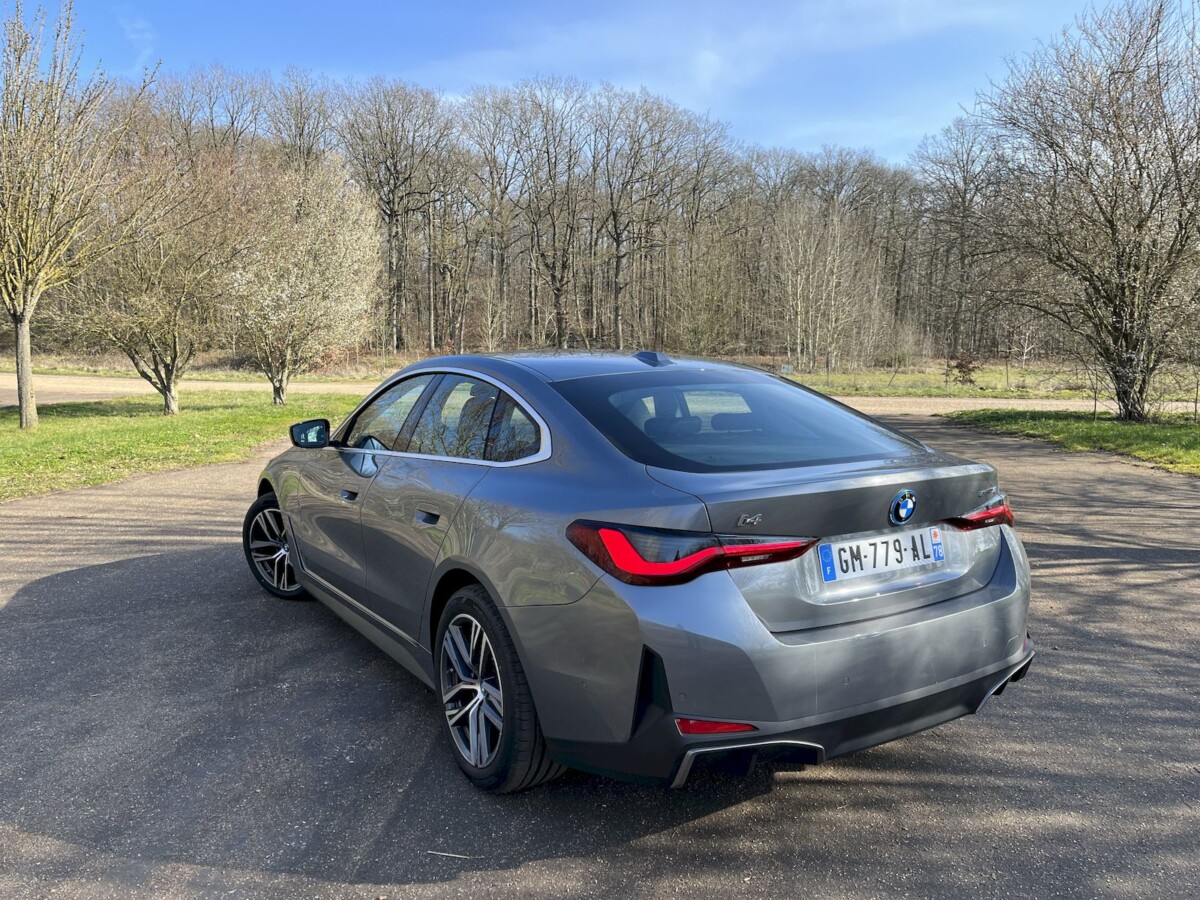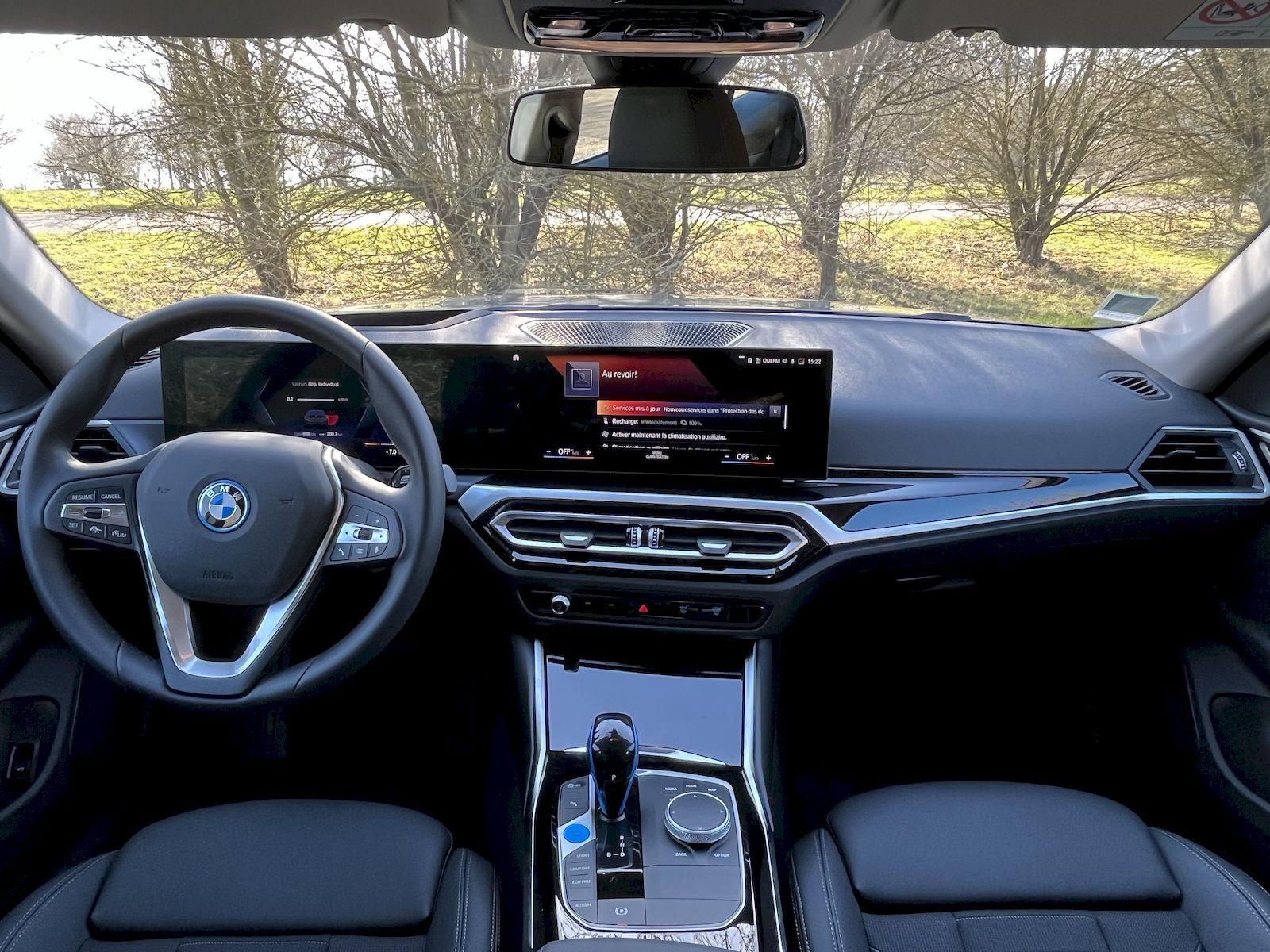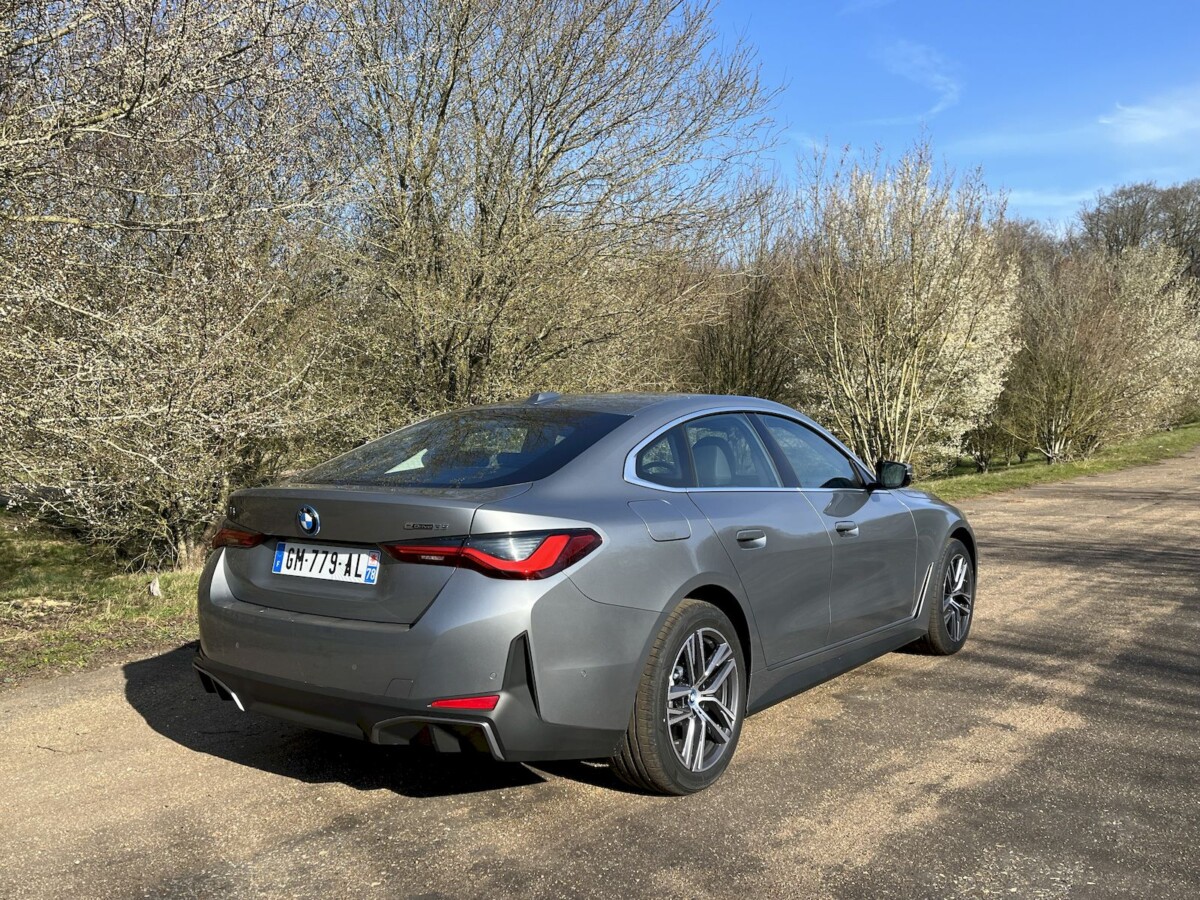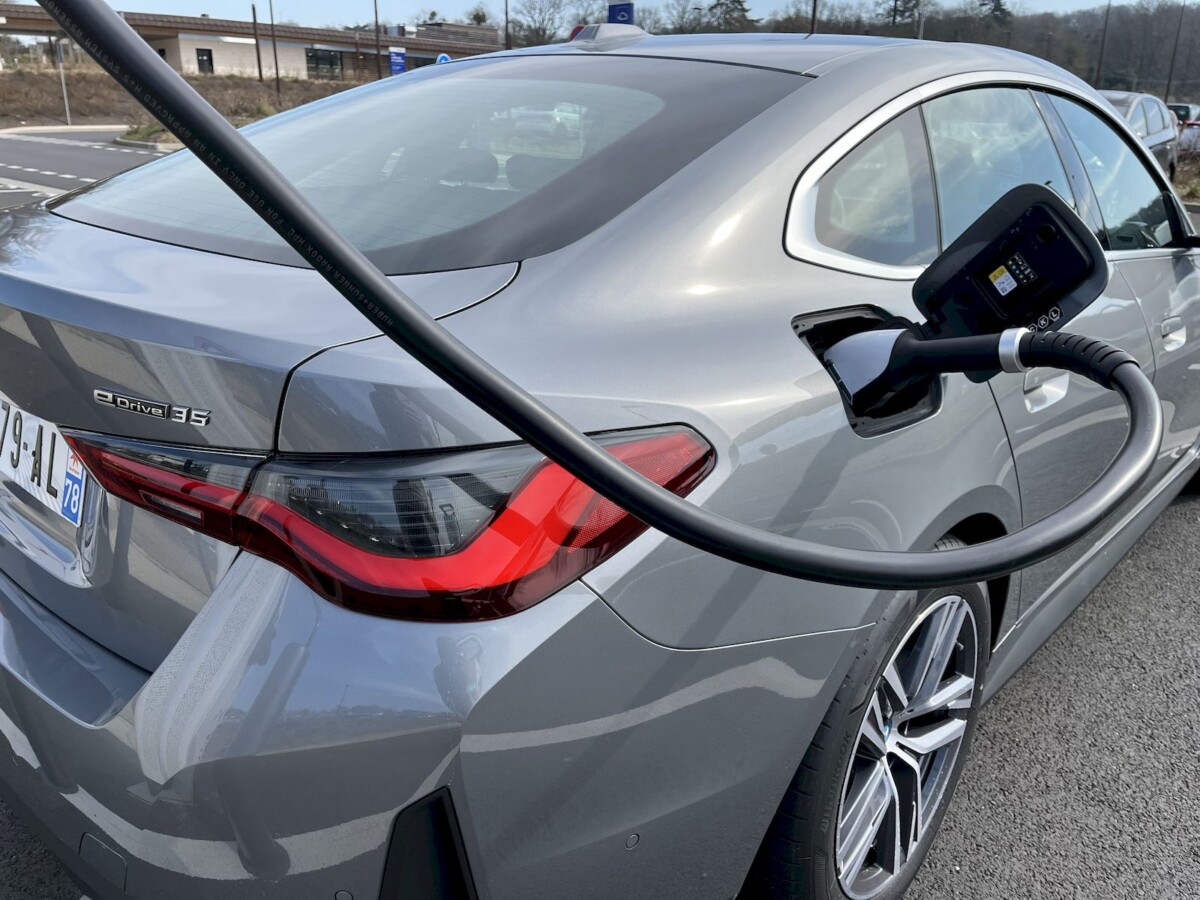The BMW i4 is a model that we’re becoming quite familiar with after the impressive test drives of the eDrive40 and M50 versions. It is currently the most legitimate competitor to the famous Tesla Model 3. However, BMW loses the battle from a financial perspective, especially after the significant price drop implemented by the American automaker at the beginning of the year.
Nevertheless, BMW had a plan, announcing in August 2022 a “smaller” BMW i4, obviously cheaper, still premium, and with a price tag that matched the Tesla Model 3’s prices in late 2022, around $53,000.
Even though Tesla regained control of the market by drastically reducing the prices of its models, the new BMW i4 eDrive35 comes with interesting features, all at more affordable prices. These features could potentially tip the scales for customers torn between a hybrid Series 3 and a 100% electric i4.

Technical Specification
| Model | BMW i4 eDrive35 |
| Dimensions | 4.783m x 1.852m x 1.448m |
| Power | 286 horsepower |
| 0-100km/h | 6.0 seconds |
| Range | Partial range |
| Top speed | 190 km/h |
| Onboard OS | BMW OS |
| Main screen size | 14.9 inches |
| Vehicle-side plug | Type 2 Combo (CCS) |
| Base price | $53,550 |
Design
As you can see in the pictures, the BMW i4 eDrive35 is not a budget i4, even though our test version plays the conventional sedan game, especially with its “Skyscraper Grau” metallic paint (optional at $1,090) and its 18-inch wheels (optional at $1,700) which look almost “small” compared to the huge wheels now seen on any high-end sedans or SUVs. The BMW i4 eDrive35 comes standard with 17-inch wheels.
Our test i4 also doesn’t have an optional M package, preferring to play it low-key and almost passing for a “simple” 4 Series Gran Coupe to the untrained eye who may not have noticed the solid grille. The dimensions are unchanged from the models we have already tested, with 4.78 meters in length, 1.85 meters in width, and 1.44 meters in height. The dimensions of a beautiful family sedan in short, not very suitable for urban use, and rather made for racking up kilometers at a good pace with the whole family.
Interior space
While Audi and even Mercedes have lost points in recent years in terms of finishing, BMW has gained a lot. The BMW i4 has a meticulously crafted interior, with little “wow” effect like you might find in Mercedes with the large screens, although the i4 is not bad in that regard either. The materials are of high quality, the finishes impeccable, and the ergonomics around the two screens are appreciated, with some physical shortcuts on the center console welcomed. But as we will see below, good ergonomics ratings stop there.

We appreciate the low seating position, which is quite rare in an electric car, even a sedan, and the driving position is ideal for those who prefer something more sporty.
In the back, two adults will feel comfortable with adequate knee space. Thanks also to the indented seating, which allows for a few precious centimeters of headroom. BMW claims a trunk capacity of 470 liters, as much as the 4 Series Gran Coupé. Not bad for an electric sedan, especially since storage is even provided for the charging cable.
Infotainment
You have probably noticed the presence of a new double, curved and stacked display, with a 12.3-inch screen in front of the driver’s eyes and another 14.9-inch touchscreen. The integration of this double display is questionable and seems to have been added almost as an afterthought. The advantage of the double screen is that it eliminates the majority of physical controls. The disadvantage is that the ergonomics can sometimes become a bit more complicated.
The screen is responsive and has no latency. The graphics are also quite refined. However, the infotainment system is not the most ergonomic, with countless functions hidden in numerous sub-menus.
During our first test of the BMW i4 M50, we thought it was just a matter of getting used to it, but it turns out that’s not necessarily the case. Since then, we have tested several models in the range equipped with this system, and it’s still complicated to navigate.
It is still possible to use Apple CarPlay and Android Auto functions, and the car has several USB ports in the front and back, as well as wireless charging for smartphones. Note that the system will be updated to BMW OS 8.5 in the coming months.
Driving aids
Regarding driving aids, they do not differ from those we already know on the BMW 3 Series and 4 Series. We therefore find a plethora of driving aids such as adaptive cruise control, lane departure warning, lane centering, 360-degree camera, blind spot monitoring, and emergency automatic braking. This makes it an electric car equipped with level 2 semi-autonomous driving.
We were able to test these technologies on the highway, and it is clear that they work quite well, with a particularly gradual adaptive cruise control that does not brake suddenly even when getting too close to another vehicle.
As we will see below, this eDrive35 version justifies its price reduction solely by modified motor and battery specifications compared to an eDrive40. The standard equipment remains the same on both versions.
Route Planner
While the accuracy and graphics of embedded GPS may not have been entirely satisfactory, it’s still praiseworthy that it’s possible to plan a route with the necessary recharge stops and the time required to continue one’s journey in a hassle-free manner.
The majority of charging stations are mapped, but they must work properly. However, that’s another story. When simulating a route between Paris and Marseille, the route planner recommended four stops: two “big” ones of just under half an hour on fast chargers, one supplementary stop of a few minutes, and one intermediate stop of less than 20 minutes. Each time, this corresponds to about two hours of driving, the recommended time for a break on the highway.
It should also be noted that even for its small i4, BMW offers the BMW Charging map with a one-year subscription included in the Active package and the Ionity Plus option.
Driving
While the BMW i4 M50 emphasizes performance with no less than 544 hp and 795 Nm of torque thanks to an electric motor on each axle, the i4 eDrive40 loses a motor but remains speedy with 340 hp on the rear wheels alone. Our i4 eDrive35 retains the same propulsion configuration, but its motor loses some horsepower in the battle, now with 286 hp and 400 Nm. The 0-100 km/h acceleration is decent with 6.0 seconds announced for this exercise.

As we noted in our tests, while the M50 version is the most efficient, it’s not necessarily the most fun to drive. In fact, the eDrive35 and eDrive40’s propulsion temperament gives the “small” i4s a very pleasant playful side in dynamic driving, even a little wild once the aids are completely disconnected, with a front end that doesn’t roll quite as well as older BMWs due to the weight, but allows for some nice power-on drifts.
And what about comfort? It’s surely the most important element for a customer, and this eDrive35 version partially softens the M50’s stiffness, even if everything isn’t perfect. The suspension remains quite firm in compression, and the seating isn’t necessarily the most comfortable.

The car benefits from a mode B with the possibility of coming to a stop, making it a one-pedal driving mode. In dynamic driving, it obviously takes some getting used to, but at a more conventional pace, especially in urban areas, it allows you to do without the brake pedal in 90% of cases.
Autonomy, Battery, and Charging
If BMW has reduced the power of the engine, the price difference compared to the eDrive40 is mostly justified by the battery and, therefore, the autonomy. While the eDrive40 and M50 models have a battery capacity of 83.9 kWh, the BMW i4 eDrive35 makes do with 70.2 kWh (66 kWh in net capacity).
This obviously affects the autonomy since BMW announces 490 km under the WLTP homologation cycle, which is 100 km less than an eDrive40 version. However, this is still comfortable for an electric sedan. For comparison, a Tesla Model 3 Propulsion is announced with a range of 510 km under the WLTP cycle.
The same goes for the charging power, which decreases to a maximum of 180 kW compared to 205 kW for higher-end versions. Still, this is enough to recover 160 km of range in 10 minutes at this power and go from 10% to 80% (DC) in 32 minutes, compared to 31 minutes for its bigger sisters.

That’s the theory, but what about in practice? To find out, we took a rather classic trip from BMW’s headquarters, in Montigny-le-Bretonneux, to Orléans via Chartres. When we took the car, almost new with only 600 km on the odometer, it indicated 279 km of autonomy with 99% battery and a winter temperature of 0 degrees. This is obviously far from the claimed 490 km, but the calculation was based on the driving data from the last trip, which was probably not a lesson in eco-driving.
Nevertheless, we hit the road to Orléans, first taking the secondary network. The GPS indicated that we would arrive in the city with 54% of autonomy after covering the planned 120 km. Upon arrival, and having adopted a rather gentle and smooth driving style with speeds of 50, 80, 90, and 110 km/h, the car indeed showed 54% battery remaining and an average consumption of 17.5 kWh/100 km.
This gave us an actual range of about 380 km on this type of journey, which was quite smooth and, it should be noted, was carried out with an outside temperature close to zero and all the comfort elements activated (heating, radio, etc.). If you are new to the world of electric cars, be aware that winter reduces the range drastically. Whatever the model, although some are better off than others, as we have recently seen.

Returning to BMW headquarters, we then chose the highway, with a brief stop at an Ionity charging station, even though the car indicated that we could cover the 125 km without stopping. So we drove at 130 km/h, still with the comfort elements activated and a slightly more pleasant temperature in the afternoon, with 7 degrees on the thermometer.
The result? We recorded an average of 24 kWh/100 km, which suggests a range of around 280 km on the highway. It should be noted that at an average of 110 km/h, we also tested the consumption, which managed to drop below 20 kWh.
We stopped at the Ionity station in Longvilliers (where we arrived with 20% autonomy) to recharge. Two other cars were also charging. Once plugged in, our i4 never reached its maximum power of 180 kW. We had a peak of a few seconds at 162 kW, but it quickly dropped. On average, we charged at about 110 kW. At the end of our charge (we stopped at around 80%), we had recovered 51 kWh for 37 minutes.
Price, Competition, and Availability
The BMW i4 eDrive35 starts at $57,550 USD. The version we tested in the photos exchanged for $64,400 USD due to a few additional options. In its base version, it costs $6,400 USD less than the eDrive40. However, the target of this eDrive35 variant is the Tesla Model 3.
At the end of last year, the Model 3 Rear-Wheel Drive was priced at $53,490 USD. Since then, the car has dropped to $44,990 USD, and it benefits from an ecological bonus of $5,000 USD in 2023, bringing the final bill down to $39,990 USD. The BMW i4 eDrive35 is not eligible for the bonus, so the price difference between the two base versions is $17,560 USD.
Is it justified? No, especially since the Model 3 consumes less and benefits from the more dense and infinitely more reliable Supercharger network. The BMW takes the lead in terms of interior design with a higher-end ensemble, but it does not widen the gap in terms of dynamism and comfort. Tesla’s recent price drop seems to have thwarted BMW’s plans with this “small” i4, especially since the Bavarian firm has increased the prices of its i4 in the meantime.
Indeed, at its presentation last year, this version started at $53,550 USD, only $60 USD more than the previous prices of the Model 3 Rear-Wheel Drive. But when the American saw its prices drop by $8,500 USD (not counting the bonus), those of the i4 eDrive35 increased by $4,000 USD, even before the first models hit the road.
It is also worth noting that the price of this variant may make people hesitate when faced with more mainstream models, such as the 229 hp Kia EV6 Rear-Wheel Drive, with a 77.4 kWh battery and a range of 510 km, which starts at $56,940 USD. There is also the new 229 hp Hyundai Ioniq 6 Rear-Wheel Drive, with a 77.4 kWh battery and a range between 545 and 614 km, which starts at $52,300 USD.
Editor’s Verdict
The BMW i4 is an excellent electric car, and this eDrive35 version only confirms it, even if it loses some kWh and horsepower in the battle to become more “affordable”. The problem is that BMW was targeting Tesla, but no one could anticipate such a sharp drop in Model 3 prices in such a short time, especially after a 2022 marked by several increases.
Nevertheless, with Tesla, nothing is ever certain, and prices may gradually rise again in the coming months. It will therefore once again face the BMW i4 eDrive35 if its prices have not skyrocketed either because BMW, like all manufacturers at the moment, is more likely to revise its prices upward than downward.
But with a $15,000 USD difference between the cheapest Model 3 and the cheapest i4 today, if there were a match, it would be settled on the budget alone. In many other respects, the BMW i4 matches or even surpasses the American car, but it also works the other way around. So, it’s still a stalemate between these two models, but when it comes to signing the check, unless there is a big crush for the Bavarian car, the game is over.
Positive points of the BMW i4 eDrive35:
- Dynamic behavior
- Impeccable finishes
- Up-to-date technologies
Negative points of the BMW i4 eDrive35:
- Menu ergonomics of the screen
- High prices compared to the Tesla Model 3
- Highway autonomy”

